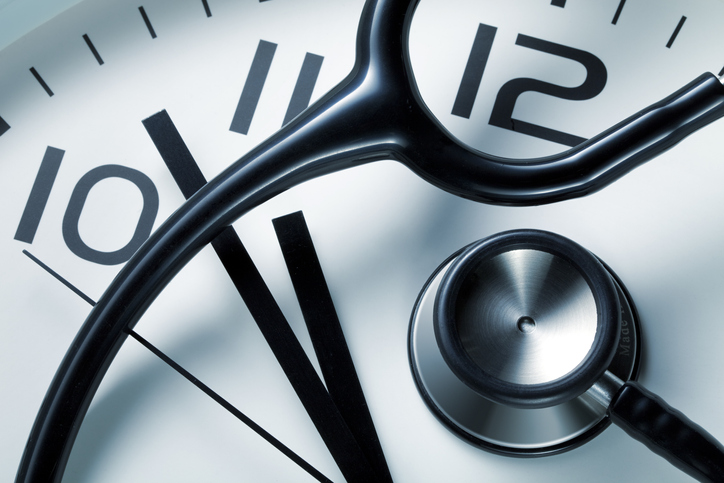
Two individuals in Sierra Leone don Hazmat suits during the recent Ebola epidemic
The world was not prepared for the latest outbreak of Ebola and it showed.
The virus ravaged West Africa from Dec. 2013 to Jan. 2016, hitting Liberia, Guinea, and Sierra Leone the hardest. All told, some 28,616 cases were reported to the World Health Organization (WHO) and more than 11,000 people died.

With the Rise of AI, What IP Disputes in Healthcare Are Likely to Emerge?
Munck Wilson Mandala Partner Greg Howison shared his perspective on some of the legal ramifications around AI, IP, connected devices and the data they generate, in response to emailed questions.
But as reality hit home, science mobilized. Towards the end of the outbreak, Merck was ready to run a large-scale trial to test the effectiveness of its experimental vaccine rVSV-ZEBOV. The drug was licensed from NewLink Genetics Corp in 2014.
Held in Guinea, the collaborative study was led by the WHO, with support from the Guinean Health Ministry and international research institutions.
The trial followed a ‘ring vaccination‘ methodology to addresses the inherent difficulty of predicting infections. For the active arm of the trial, rVSV-ZEBOV was given to first and second degree connections of patients infected with Ebola.
According to data published in The Lancet on Thursday, all patients immediately dosed with the vaccine made it through the trial period without contracting the disease. That’s 100 percent effectiveness — though it’s hard to predict how many subjects were directly exposed.
In the cohort of patients that didn’t receive the vaccine or got a delayed dose, 23 individuals contracted the virus.
In a commentary piece accompanying the journal article, Thomas Geisbert of the University of Texas Medical Branch at Galveston suggested that the late-stage trial might have helped end the outbreak sooner.
“These data strongly suggest that the rVSV-ZEBOV vaccine was effective in protecting against Ebola virus infection and probably contributed to controlling the 2013–16 outbreak of Ebola virus disease in Guinea.”
There is certainly a lot of optimism and a sense of urgency with the vaccine.
After preliminary results showed a high degree of efficacy, the Global Vaccine Alliance (GAVI) contributed $5 million for Merck to stockpile the drug. It now has 300,000 units stored for an emergency response.
The caveat is that rVSV-ZEBOV has only been proven effective in one of five strains of the disease, Ebola Zaire.
According to the WHO, three of the five subtypes have been associated with large hemorrhagic fever outbreaks; Ebola-Zaire, Ebola-Sudan and Ebola-Bundibugyo. Ebola-Zaire appears to be the most deadly.
Photo: European Commission DG ECHO, Flickr














